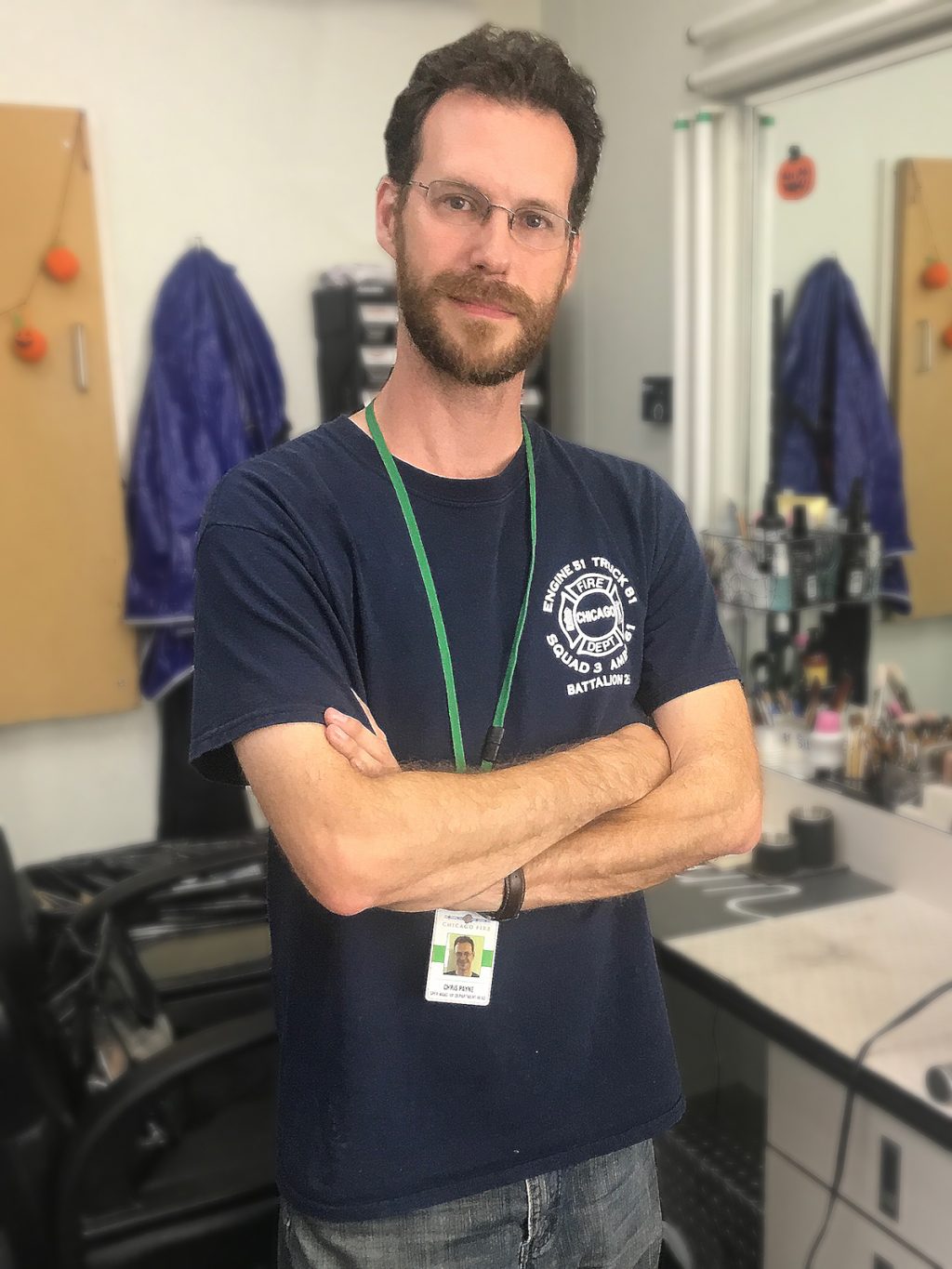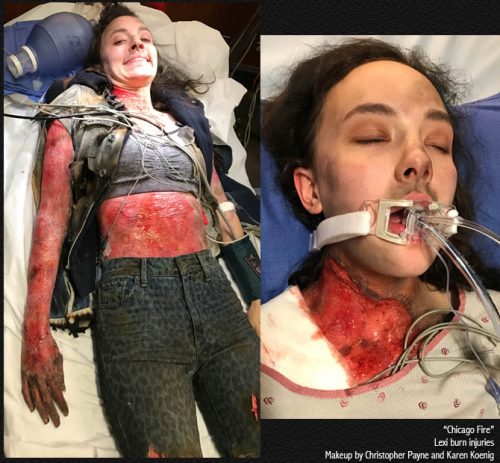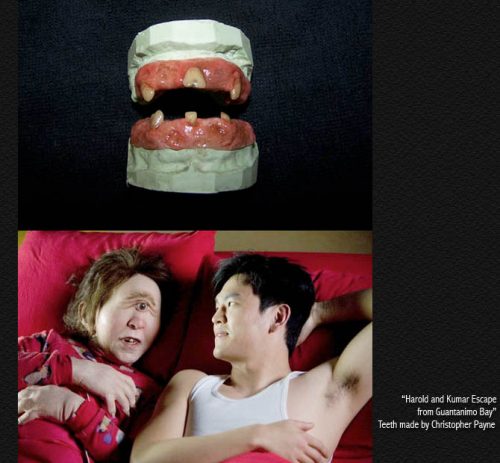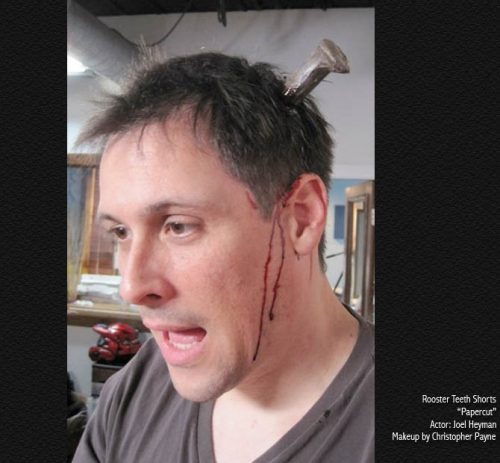
Chris Payne – Special Effects Artist
Christopher Payne is a seasoned professional special effects artist residing in Chicago. You may have already witnessed his work on NBC’s action/drama Chicago Fire, which is now airing its 6th season. His resume also includes work on CSI, NCIS, Nip/Tuck, Grey’s Anatomy, Lost, Jupiter Ascending, Star Trek, and the classic Harold and Kumar 2. Chris’s work can be viewed every week on Thursday night at 9 p.m. on NBC. Chris granted In The Loop an opportunity to learn about his industry experience and any advice he has for someone starting out in the film and TV business.
IN THE LOOP: When did you first get interested in Special FX?
CHRISTOPHER PAYNE: I was a big sci-fi fan growing up, so movies like Star Wars, The Termi- nator and Predator were big influences on me. Using the few books that were available at the time I practiced basic makeups on myself and friends.
ITL: What are you currently working on?
CP: I am currently the Special Effects Makeup Department Head on NBC’s Chicago Fire.
ITL: How long have you been working on your current show?
CP: I’ve been working on Chicago Fire for almost four years.
ITL: What it it like seeing your work on TV?
CP: Usually nerve-wracking. I’m more familiar with the flaws than anyone, so sometimes they’re all I see. Most of the time once I see that the makeup looks good I calm down.
ITL: Where do you create most of your work?
CP: I have a shop at Cinespace Studios, where the show is filmed. I also have a small shop
space in my garage for the rare times I have time for a freelance gig.
ITL: What do you like about your job?
CP: I grew up in the theater, both onstage and backstage. I love creating characters, which is what my job is all about.
ITL: What are the biggest challenges of your job?
CP: Most often the biggest challenges come down to not being given enough time to get effects done the way I’d like to. With the show currently in its sixth season, the writers are also coming up with more and more unusual rescue situations which provide a real technical challenge. “I don’t know how to do that” isn’t an acceptable excuse, part of my job is to figure it out (often quickly).
ITL: What movies, films, or books do you recommend for students.
CP: Any big makeup movies such as Lord of the Rings, Star Wars or Pan’s Labyrinth can be very inspiring to a student. Some DVDs such as Blade 2 and LOTR have pretty extensive special features showing the makeup process. A couple books I would recommend are the “Mon- strous Make-Up Manual” series by Mike Spatola and “Special Effects Makeup for Stage and Screen” by Todd Debreceni. I’d also recommend starting a collection of books on anatomy for realistic effects, and on animals and nature for design and painting ideas.
ITL: What movie do you think has great special FX?
CP: Much of Guillermo Del Toro’s work showcases incredible makeup effects. Always a source
of inspiration.
ITL: Who are people in your field that you look up to?
CP: Dick Smith was considered the Godfather of Makeup Effects, and is one of the first people I tell folks to look up. Other major names include Rick Baker, Stan Winston, Neill Gorton, Greg Cannom and Ve Neill.
ITL: If you could give your younger self a bit of professional advice, what would it be?
CP: Get a business minor in college. It would have made a lot of things in my career easier to have had some proper training there.






